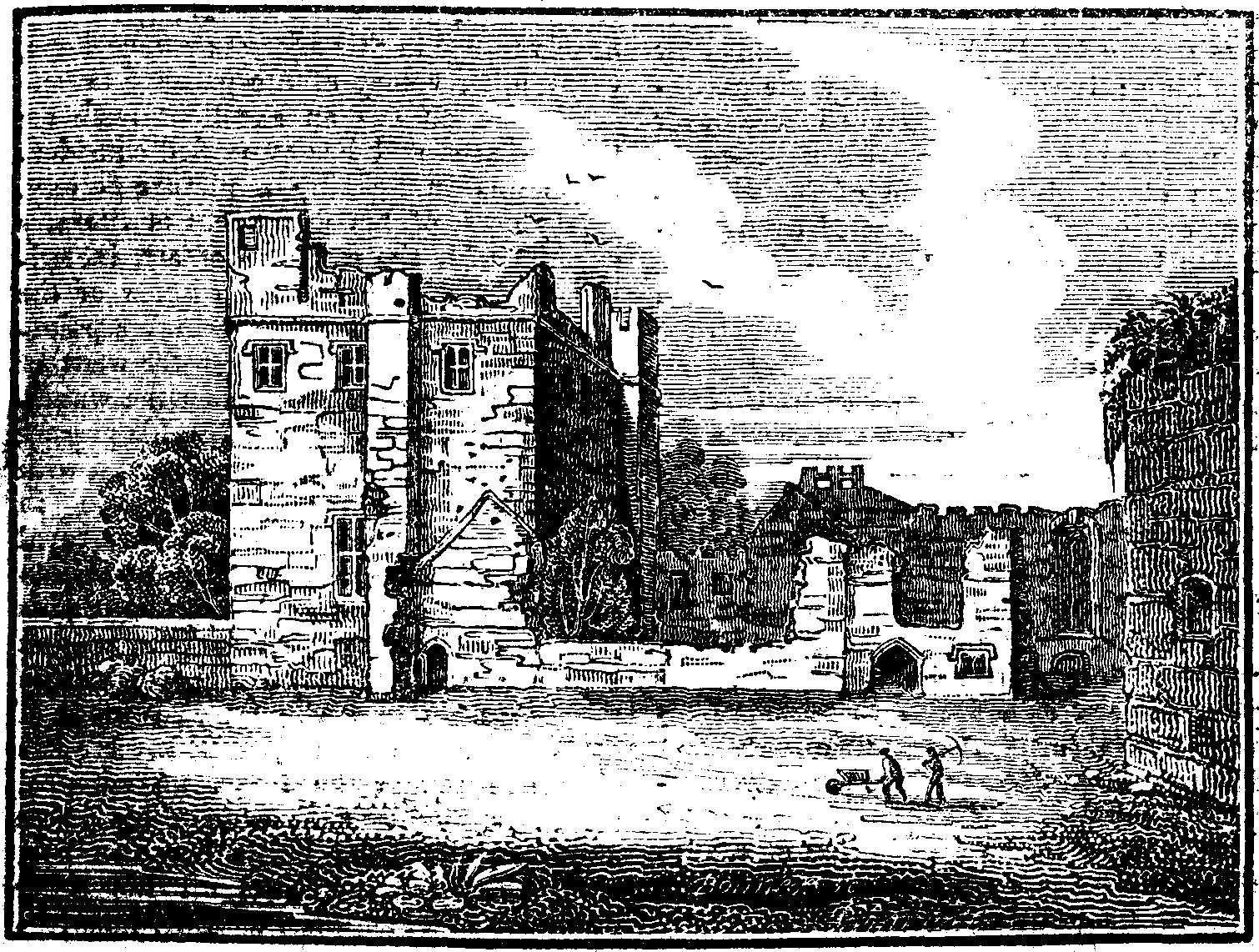THE MIRROR
OF
LITERATURE, AMUSEMENT, AND INSTRUCTION.
| Vol. 10, No. 265.] | SATURDAY, JULY 21, 1827. | [PRICE 2d. |
ASHBY-DE-LA-ZOUCH CASTLE.
Ashby-de-la-Zouch is a small market town in Leicestershire, pleasantly situated in a fertile vale, on the skirts of the adjoining county of Derbyshire, on the banks of a small liver called the Gilwiskaw, over which is a handsome stone bridge. The original name of this town was simply Ashby, but it acquired the addition of De-la-Zouch, to distinguish it from other Ashbys, from the Zouches, who were formerly lords of this manor, which after the extinction of the male line of that family, in the first year of the reign of Henry IV. came to Sir Hugh Burnel, knight of the garter, by his marriage with Joice, the heiress of the Zouches. From him it devolved to James Butler, earl of Ormond and Wiltshire; who being attainted on account of his adherence to the party of Henry VI. it escheated to the crown, and was, in the first year of Edward IV. granted by that king to Sir William Hastings, in consideration of his great services; he was also created a baron, chamberlain of the household; captain of Calais, and knight of the garter, and had license to make a park and cranellate, or fortify several of his houses, amongst which was one at this place, which was of great extent, strength, and importance, and where he and his descendants resided for about two hundred years. It was situated on the south side of the town, on a rising ground, and was chiefly composed of brick and stone; the rooms were spacious and magnificent, attached to which was a costly private chapel. The building had two lofty towers of immense size, one of them containing a large hall, great chambers, bedchambers, kitchen, cellars, and all other offices. The other was called the kitchen tower. Parts of the wall of the hall, chapel, and kitchen, are still remaining, which display a grand and interesting mass of ruins; the mutilated walls being richly decorated with doorways, chimney-pieces, windows, coats of arms, and other devices. In this, castle, the unfortunate and persecuted Mary queen of Scots, who has given celebrity to so many castles and old mansions, by her melancholy imprisonment beneath their lofty turrets, was for some time confined, while in the custody of the earl of Huntingdon. In the year 1603, Anne, consort of James I. and her son, prince Henry, were entertained by the [pg 50] earl of Huntingdon at this castle, which was at that time the seat of much hospitality. It was afterwards honoured by a visit from that monarch, who remained here for several days, during which time dinner was always served up by thirty poor knights, with gold chains and velvet gowns. In the civil wars between king Charles and his parliament, this castle was deeply involved, being garrisoned for the king; it was besieged by the parliamentary forces, and although it was never actually conquered, (from whence the garrison obtained the name of Maiden,) it was evacuated a
